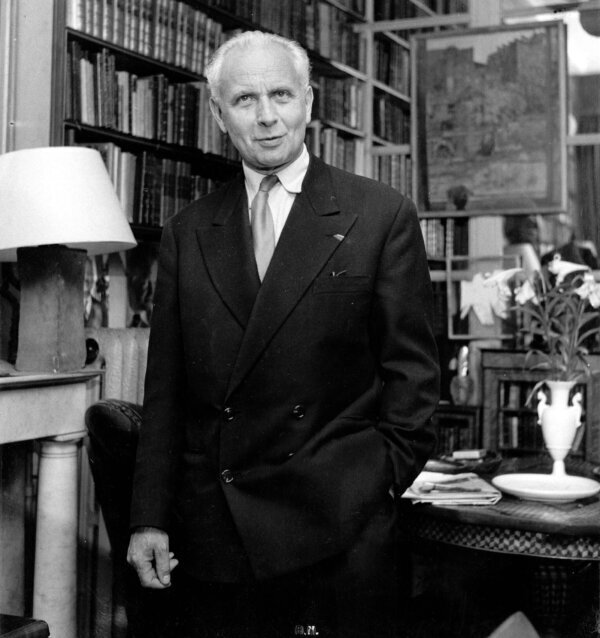True Grit or Phronesis and the Happy Ending

Sometime after the Civil War, likely in 1875, an Arkansas girl of 14 hires a US Marshal to pursue one Tom Chaney, the man who murdered her father, into the Oklahoma Indian territory. She narrates the story in the first person from the year 1928. Her mission is successful but at the cost of seven lives and she is maimed in the process.
This is the essence of True Grit, a novel by Charles Portis published in 1968, and filmed twice. Over the forty-five years since, this novel has joined a small list of novels that could be called the popular American canon. Not the literary canon as found, for example in the New York Review of Books, but that which includes works such as Gone with the Wind, Catcher in the Rye, Catch 22, perhaps The Color Purple, and certainly To Kill a Mockingbird.
When something lasts that long and is held to the hearts of so many people, it is worth a little thinking on.
Let us not here debate how the famous movie from 1969 (the one with John Wayne) compares to the 2010 version (with Jeff Bridges), although that is a very pleasant thing to chew over. Actually, both films were about equally faithful to the book, and, although on most points (acting, photography, moral gravity) the later film is superior, it did not have John Wayne, so call it a draw.
Rather, let’s stick to the book and ask why it has been so popular so long.
The accidents of the story are clean and solid: the plot is lively, the painting of Fort Smith vivid:
They have that big wide street there called Garrison Avenue like places out in the west. The buildings are made of fieldstone and all the windows need washing.
There are charming incidents of daily life in Fort Smith:
Two white men and an Indian were standing up there on the platform with their hands tied behind them and the three nooses hanging loose beside their heads.
and pungent dialogue:
“Colonel Stonehill said you were a road agent before you got to be a marshal.”
“I wondered who was spreading that talk. That old gentleman would do better minding his own business.”
“Then it is just talk.”
“It is very little more than that. I found myself one pretty spring day in Las Vegas, New Mexico, in need of a road stake and I robbed one of them little high-interest banks there. Thought I was doing a good service . . . .”
“It is all stealing,” said I.
“That was the position they taken in New Mexico,” said he.
That is good, and it is not easily accomplished. On a deeper note, the chief characters act with courage throughout and it is hard to tell a bad story about realistic courage.
So the novel has that too. But this being VoegelinView, let us ask a Voegelinian question:
Does Mattie Ross, the heroine (the Kim Darby/Hailee Steinfeld character) display phronesis?
Walk that down your stoa for awhile.
The virtue of Phronesis or Prudence receives its classic treatment in the Nicomachean Ethics VI, chapter V. Aristotle says (this is from Rackham’s Loeb translation):
“Now it is held to be the mark of a prudent man to be able to deliberate for himself well about what is good and advantageous for himself, not in some one department, for instance what is good for his health or strength, but what is advantageous as a means to the good life in general.” (1140a25-28)
and:
“It remains therefore that it is a truth-attaining rational quality, concerned with action in relation to things that are good and bad for human beings.” (1140b6-8)
and
“Hence men like Pericles are deemed prudent, because they possess a faculty of discerning what things are good for themselves and for mankind; (1140b8-13).
It would be pleasant to attribute this virtue to Mattie Ross. Mattie Ross is an admirable character, albeit astringent. She displays initiative, persistence and courage. She would probably accept the attribution of phronesis without a qualm. Didn’t she take matters into hand herself, and under difficult circumstances, and employing unreliable tools, and didn’t she get the job done?
But phronesis? No, Ms. Ross, not a bit. A person with phronesis would not have picked Reuben Cogburn (the Wayne/Bridges character) in the first place. There were other men, less ruthless but more reliable.
“Who is the best marshal they have?”
The sheriff thought on it for a minute. He said, “I would have to weigh that proposition. There is near about two hundred of them. I reckon William Waters is the best tracker. He is a half-breed Comanche and it is something to see, watching him cut for sign. The meanest one is Rooster Cogburn. He is a pitiless man, double-tough, and fear don’t enter into his thinking. He loves to pull a cork. Now L. T. Quinn, he brings his prisoners in alive . . . Quinn is a good peace officer and a lay preacher to boot. He will not plant evidence or abuse a prisoner . . .”
But Miss Ross is in a fury of high moral indignation and aiming to work not just justice but bigtime hurt, so Cogburn it is.
That decided, she has to go with the marshal (and a Texas ranger) on the expedition, pursuing Tom Chaney to his undisclosed location in the Winding Stair Mountains, ostensibly to watch out for her own interests. And as pointed out to her in the story, this is silly. But she wants to be there to gloat, perhaps. Her presence during the mission creates friction between Cogburn and LaBoeuf, the Texan, and it is her presence at the climax that leads to disaster.
Certainly, not how Pericles would have done it.
Does she have noesis? Still less. Noetic insight would have told her that revenge is futile; but doing right is identical in her mind with getting even. No, she is admirable, but she is little and fierce and greedy, as Shaw described early Rome. She has force of character and right on her side, not to mention a head full of Bible verses, but that does not make a practical philosopher.
Now this leads to a third issue.
The story, as we mentioned, is narrated in the voice of its chief character. In reading the novel, it is difficult not to be sucked into her vision and version of events. From her perspective, the story has a happy ending. She struggled, she won, and that is that.
But the reader ought to judge the events from the outside, and from that angle, the story looks less like an adventure laced with nostalgia than a tragedy: a case of self-will, ungoverned by phronesis, leading to a life maimed and alone. True Grit presents itself as a romp and is actually a masterpiece of appalling morality, to paraphrase what Stevenson said about Madame Bovary.
A “Happy Ending” need not always leave the characters wreathed with smiles and roses. The ending of the film Vertigo is dour, at least for the people in the movie. But from the outside, we see that the James Stewart character has been freed of illusion and the Kim Novak character has been paid back for her deceit and participation in a cruel murder. Which means right has triumphed, and the ending is happy.
The reverse in the case of True Grit. As in many famous American novels, for example Moby Dick and The Great Gatsby, an unreasonable quest leads to catastrophe; wild justice is served and no-one learns anything.
This, in fact, may be the secret of the success of True Grit over the years: people recognize it as how things work. For the good life, true grit is a necessary virtue. But it is not sufficient.




